

e-mail :  ( Please write in ' Subject ' entry : ' METAPHYSICS ', in order for me to be able to distinguish your mail from spam )
( Please write in ' Subject ' entry : ' METAPHYSICS ', in order for me to be able to distinguish your mail from spam )
Most expressed example of the type :
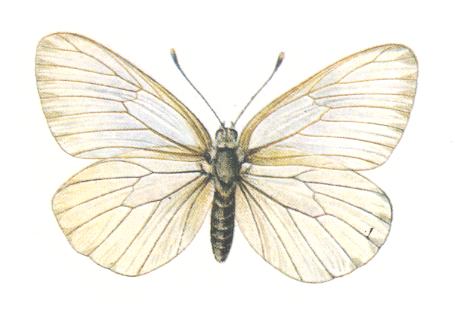
Figure 1 : Aporia crataegi. 32-35 mm. (forewingspan). Europe, temperate zone of Asia up to Japan and Korea.
(After SEVERA, in Thieme's Insektengids.)
Description of the type
Morphological features
Both pairs of wings more or less equally developed -- homonomy well expressed. Skeleton of thorax and muscular apparatus shows a lesser degree of homonomy. Mesothorax significantly larger than metathorax. Wings of both pairs very broad. Forewings more or less triangular, with well expressed termenal margin (See for "termen" (t) of wing : Figure 1 in Part I ), well differentiated from the wing's hind margin. Hindwings as a rule shorter than forewings with a straight anterior margin. The overall shape of the hindwing approaches that of a circle quadrant. Venation radially distributed over the wing, uniformly strengthening the whole membrane of it, displaying moderate costalization [= strenghtening of anterior veins and/or displacement of them close to the anterior wing margin] of the forewing, especially in its basal half. Body elongated, not displaying one or another special feature of aerodynamic adaptation as to its shape. Size medium or large. Wings always longer and broader than the body, in resting position often held sideways.
Functional features
Both pairs of wings participate in the flight movements in which the wing-beats take place simultaneously. There is a special device of attachment of forwings with hindwings in the form of hooks or bristles. Speed of flight little investigated, it reaches 3.5 - 4 meter per second (in Papilio podalirius L.). Wing beat frequency is better known and varies from 5.5 up to 19 (butterflies) and even up to 32 (geometrid, Acidalia) per second. A gliding mode of flying occurs. Maneuverabilty not specifically studied. It probably isn't very great. There exist pretty much data of load per unit of surface, in this type attaining the lowest values from 0.0096 up to 0.0166 gr/cm2 in the basic (second) subtype, and from 0.0150 up to 0.1089 gr/cm2 in the third subtype. Flight is a very important function in the biology of the type's representatives. In these insects most of the time of their active life (as adult) is spent in flight. Legs often are little developed and always weak, little adapted to strong movements. A characteristic feature consists in the ability of gliding, almost absent in the other types. All described features characterize this type as a special direction of the evolution of flight, having proceeded along the line of improving flight qualities by means of enlargement of the surface of the wings, decreasing load per unit surface, together with little increase of power of the muscular apparatus.
Differentiation, connections and representatives of the type.
The chief source of broad-wingedness was neuropterygia, one of the most primitive and simple types. Special forms of broad-wingedness also, undoubtedly, were formed on the basis of orthopterygia, straight-wingedness of certain cicadas. Today, broad-wingedness has reached a fairly diverse differentiation rendering possible to distinguish several subtypes. See also next diagram.
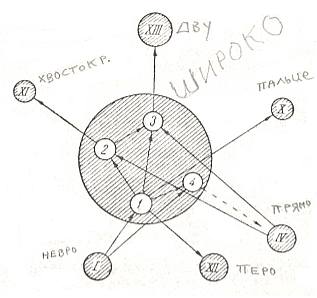
Figure 2 : Interrelationships with other types and structure of broad-wingedness (platypterygia).
I - neuropterygia. XI - uropterygia.
XIII - dipterygia.
X - dactylopterygia.
IV - orthopterygia.
XII - ptilopterygia.
1, 2, 3, 4 : subtypes of platypterygia.
(After ROHDENDORF, 1949)
1. Proplatypterygia
The most ancient forms, transitions from neuropterygia, are characterized by relatively little broadened, [but] elongated fore- and hindwings. In addition to that there often are germs of heteronomy consisting of a decrease of the relative size of the hindwings. This subtype -- original broad-wingedness or proplatypterygia -- is the chief source of the other subtypes. It is illustrated by the lepidopterans Hepialidae (Zeto, Phassus, and others), Cyclotornidae, Xyloryctidae,and others. To the present type also should belong certain Neuroptera (Berothidae -- Berotha, Stenobiella). See next Figures.
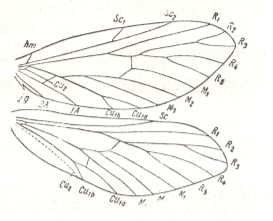
Figure 3 : Wings of Palaeoses scholastica Turn. Hepialoidea, Order Lepidoptera, Australia. Wingspan 14-18 mm.
(After TILLYARD, in ROHDENDORF, 1949)
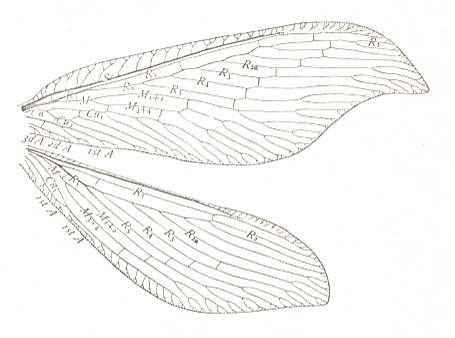
Figure 4 : Wings of Berotha insolita. Order Neuroptera.
(After COMSTOCK, 1918)
2. Euplatypterygia
Broadening of both pairs of wings, transformation of them into triangular blades, little disruption of their homonomy, slender body with little enlarged head and thorax, are the very characteristics of the chief subtype -- euplatypterygia. This subtype is most clearly illustrated by the majority of butterflies, Rhopalocera (especially Nymphalidae, Asciidae, Plebejidae, certain Papilionidae, and others), Geometroidea and certain other Heterocera (for example Uraniidae). See Figure 1 and next Figures.
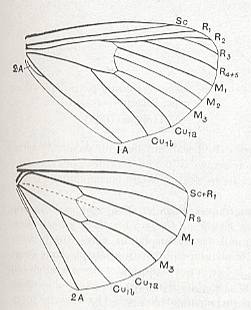
Figure 5 : Wing venation of Abraxas grossulariata. Family Geometridae, Order Lepidoptera.
(After RICHARDS and DAVIES, 1977)
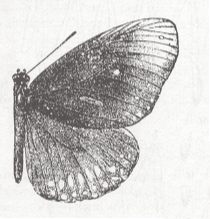
Figure 6 : Euploea godarti. Male, India. Family Nymphalidae, Order Lepidoptera.
(After BINGHAM, in RICHARDS and DAVIES, 1977)
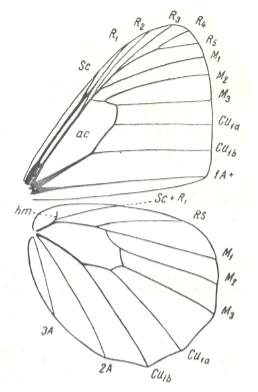
Figure 7 : Wing-venation of Tisiphone abeona Don. Family Nymphalidae, Order Lepidoptera. Australia
(After TILLYARD, in ROHDENDORF, 1949)
To this group also belong certain Neuroptera of the fossil family Kalligrammatidae :

Figure 8 : Kalligramma haeckeli Walth. Family Kalligrammatidae, Order Neuroptera. Jurassic of Western Europe.
Wing-span 240 mm. Reconstruction.
(After HANDLIRSCH, in ROHDENDORF, 1949)
3. Diplatypterygia
Broad-wingedness acquires special forms with the increase of size of forewings and body. To this subtype -- progressive broad-wingedness or diplatypterygia -- belong many diverse groups of Lepidoptera. Such for example : Lasiocampidae, Ocneriidae, Limacodidae, Pyraustidae, certain Noctuidae (for instance Catocalinae), certain Hepialidae (Hepialus, Charagia), and Cossidae. See Figures.
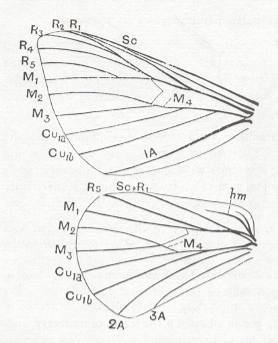
Figure 9 : Wing venation of Malacosoma neustria. Family Lasiocampidae, Order Lepidoptera.
(After RICHARDS and DAVIES, 1977)
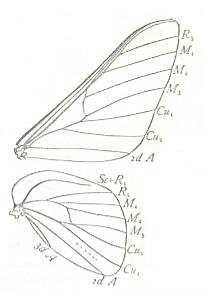
Figure 10 : Wing venation of Anisota virginiensis. Order Lepidoptera.
(After COMSTOCK, 1918)
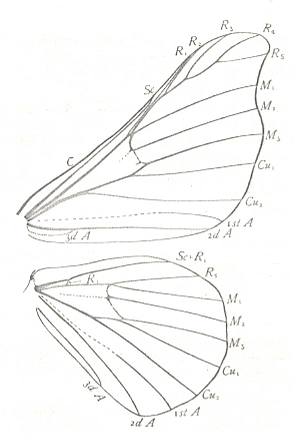
Figure 11 : Wing venation of Bombyx mori. Family Bombycidae, Order Lepidoptera.
(After COMSTOCK, 1918)
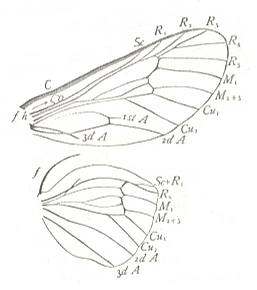
Figure 12 : Wing venation of Thyridopteryx sp. Order Lepidoptera.
f - frenulum. f h - frenulum hook.
(After COMSTOCK, 1918)
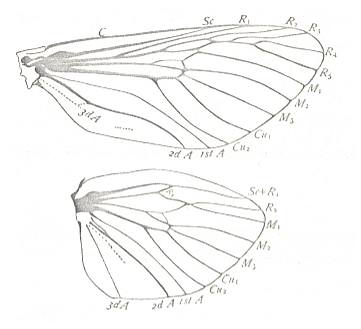
Figure 13 : Wing venation of Prionoxystus robiniae. Order Lepidoptera.
(After COMSTOCK, 1918)
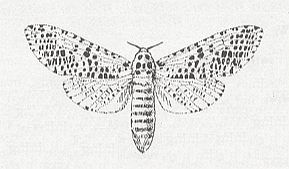
Figure 14 : Zeuzera pyrina. Female. Family Cossidae, Order Lepidoptera.
(After HOWARD and CHITTENDEN, in RICHARDS and DAVIES, 1977)
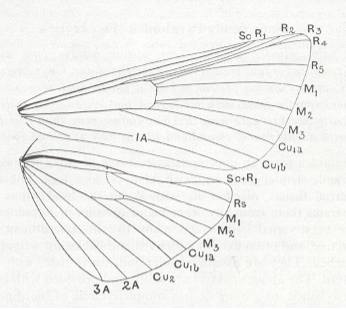
Figure 15 : Wing-venation of Pleuroptya ruralis. Family Pyraustidae, Order Lepidoptera.
(After RICHARDS and DAVIES, 1977)
To this subtype also belong certain cicadas -- of the families Ricaniidae, Flatidae, and neuropterans of the family Psychopsididae :
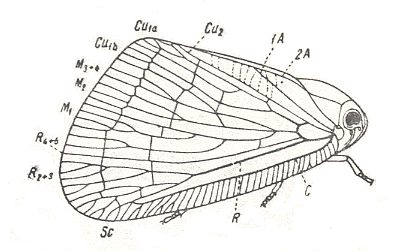
Figure 16 : Scolypopa australis Walk. Family Ricaniidae, Order Homoptera. Australia
Lenght 10 mm.
(After TILLYARD, in ROHDENDORF, 1949)
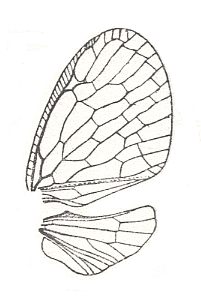
Figure 17 : Wings of Armacia clara Walk. Family Ricaniidae, Order Homoptera.
Lenght forewing 7 mm.
(After HANDLIRSCH, in ROHDENDORF, 1949)
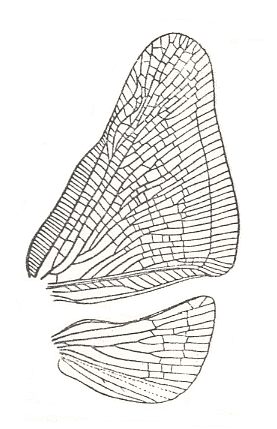
Figure 18 : Wings of Ricania sp. Family Ricaniidae, Order Homoptera. (After HANDLIRSCH, in ROHDENDORF, 1949)
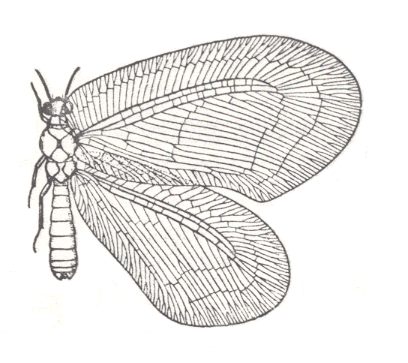
Figure 19 : Psychopsis elegans Guer. Family Psychopsididae, Order Neuroptera. Australia
Lenght of forewing 18 mm.
(After TILLYARD, in ROHDENDORF, 1949)
4. Orthoplatypterygia
Another transformation of this type consists of elongation and some increase of compactness of the forewings, straightening-out of fore and hind margins, broadening and folding of the hindwings and a certain thickening of the body. This subtype, shield-broadwingedness, or orthoplatypterygia, probably being a derivative of proplatypterygia or neuropterygia, carries features of a characteristic, definitively expressed shield-specialization. To it do belong some lepidoptera (for instance, noctoids of the family Agrotidae) and caddis flies (Limnophilidae). See Figures.
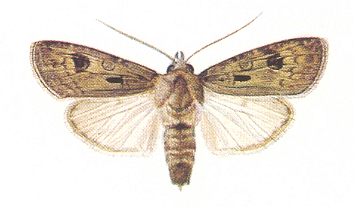
Figure 20 : Agrotis exclamationis. Family Agrotidae, Order Lepidoptera. Span of forewings 17-19 mm.
(After SEVERA, in Thieme's Insektengids, 1977)

Figure 21 : Limnophilus griseus. Family Limnophilidae, Order Trichoptera. 6.5-12 mm., Span of wings 19-30 mm.
(After SEVERA, in Thieme's Insektengids, 1977)
This scheme of differentiation in the type of broad-wingedness (platypterygia) is in a significant degree provisional, and its specification should follow from a detailed investigation of the features of wing-adaptations in the Lepidoptera in which Order the type reaches its greatest development. Connections are found, on the one hand, with neuropterygia and orthopterygia, which are the sources of this type, and, on the other hand, with a series of types that have derived from platypterygia. Such, first of all, is two-wingedness (dipterygia), having been derived from diplatypterygia, and also tail-wingedness (uropterygia), which is a derivative of certain forms of euplatypterygia, and, probably, feather-wingedness (ptilopterygia) here a derivative of representatives of proplatypterygia. The features of orthoplatypterygia point to notable connections with straight-wingedness (orthopterygia).
e-mail :
 ( Please write in ' Subject ' entry : ' METAPHYSICS ', in order for me to be able to distinguish your mail from spam )
( Please write in ' Subject ' entry : ' METAPHYSICS ', in order for me to be able to distinguish your mail from spam )
To continue click HERE for further study of the types of flight-devices in insects, Part XI, Dactylopterygia.
Back to first part of theoretic intermezzo
Back to second part of theoretic intermezzo